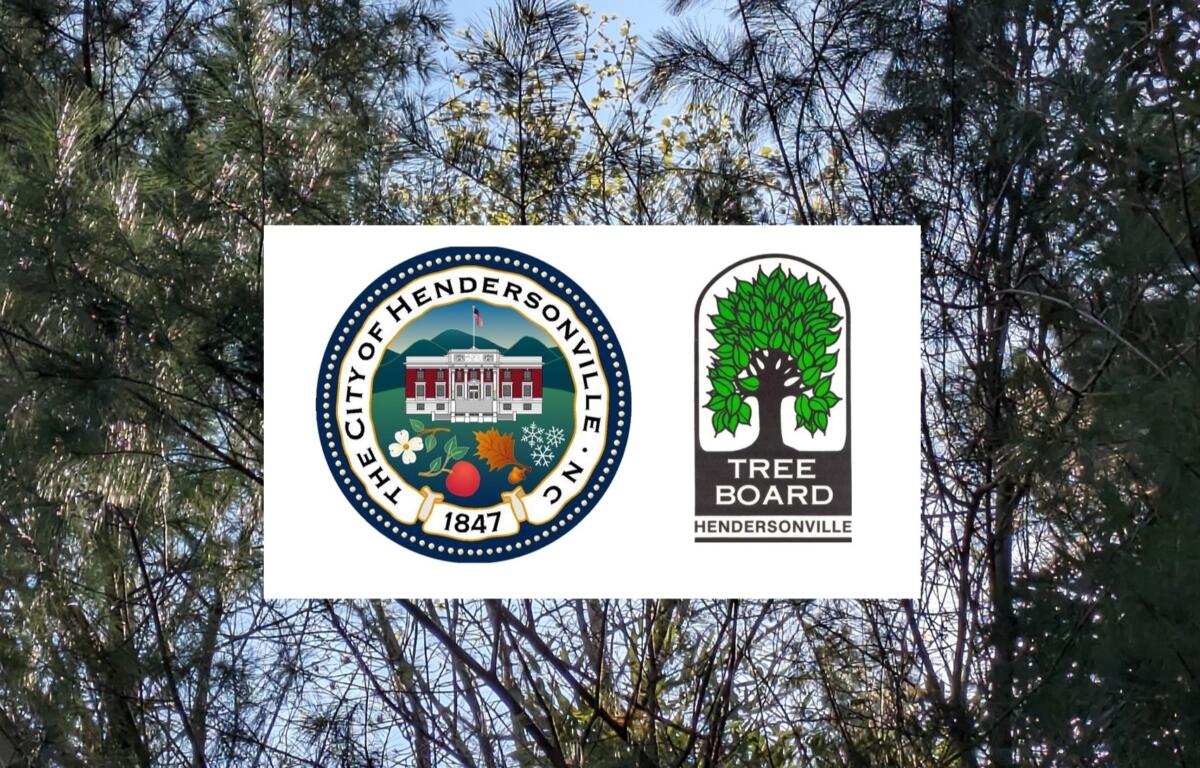HENDERSONVILLE, N.C. (828newsNOW) — Development pressures are prompting the Hendersonville City Council to consider an zoning text amendment to preserve the local tree canopy. But members of the Tree Board that first proposed the idea worry they’ll lose influence over certain zoning matters in the process.
Members of the Hendersonville Tree Board are expected voice concerns at a City Council meeting at 5:45 p.m. on Thursday at the Operations Center assembly room, 305 Williams St. in Hendersonville.
Under unfinished business, the council is expected to consider enacting a zoning text amendment on Tree Canopy Preservation & Enhancement, which seeks to limit the number of trees that have been disappearing across the city in development projects over the past decade.
The idea has been in development for the past year, after the Hendersonville’s seven-member Tree Board raised alarm over clear-cutting to make way for construction. A tree inventory found that between 2008 and early 2022, the city lost about 144 acres of trees, with another 30 acres lost since then, said Tree Board member Glenn Lange.
In the past, “development was done with trees in mind, and developers incorporated existing tree cover into the development,” Lange said. “Nowadays, developers come in, strip everything off and start completely from scratch. Everything is taken completely down to the dirt.”
“We’re losing big chunks of our tree canopy,” said Lange, 73, a retired wildlife biologist from Indiana who settled in North Carolina in large part due to its natural resources and, yes, trees.
“When we considered a place to retire, we wanted something other than corn or soybean fields, or a big city,” he said. “We looked at a lot of places and finally settled on North Carolian. we really like the state, the natural resources that are here.”
He said that when he retired to Hendersonville, it was a “tree-centric place,” but “it’s getting a little less like that now.”
After the Tree Board proposed a canopy preservation ordinance, the City Council established an Ad Hoc Tree Ordinance Committe that began meeting late last summer. After numerous public sessions, the work evolved into the zoning text amendment that will be considered Thursday night.
As a summary staff report states, “There has been increased pressure to develop Greenfield sites throughout the city.”
The report talks about wooded cites in and around the city that contribute to the character of neighborhoods, and states: “The large scale clearing and grading often associated with new development has generated considerable concerns regarding conservation and preservation of natural resorces and quality of life for residents within the city.”
The proposed text amendment seeks to offset some of the impact by establishing standards for tree canopy preservation, and creating new tree planting requirements in new developments.
The standard would apply to lots that exceed two acres that are being developed or redeveloped, establishing a baseline requirement to preserve 20 percent of canopy, with another 10 percent either preserved or offset by “alternative compliance approaches.” Lange said that could include payments in lieu of offsets, which he thinks many developers would opt to make.
For new development, there would be additional standards, such as requiring increased tree planting in vehicular use areas, and planting requirements in common or open space areas.
Council member Debbie O’Neal Roundtree, a past member of the Tree Board who serves as the board’s council liaison, said she has been concerned about the loss of trees to encroaching development. “It not only affects the wildlife It affects the people around it,” she said.
Although she said she sees some good aspects of the proposed text amendment, at Thursday’s meeting she plans to present a letter from Tree Board members concerned about several issues.
In particular, Lange said some are worried about a section that would eliminate the Tree Board’s formal role in reviewing landscape plans for developments that apply for conditional use zoning. “We’ve done that for a number of years and have been successful in modifying what the developer (proposed),” he said.
Lange said the Tree Board also is concerned that developments smaller than two acres are exempt from the canopy preservation limits, and about how the last 10 percent of the 30 percent canopy preservation could be offset with payments. “The developer has to preserve 20 percent. The last 10 percent they’re encouraged to preserve,” he said.
Lange said those portions are not changed now, the overall text amendment still would be an improvement over the status quo and perhaps it could be improved in the future.
“We simply want developers to develop with trees in mind instead of denuding the whole site,” Lange said.
Hendersonville Community Development officials did not immediately return calls seeking comment on Tuesday.
Thursday night’s agenda also includes a presentation from True Ridge Latinx, presentation of an Environmental Sustainability Board “Sustainability Hero” award, four public hearings on zoning or annexation matters, and action on water and sewer system development fees.


